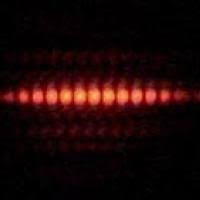The double-slit experiment is a famous physics demonstration that reveals the dual nature of light and matter.
First performed by Thomas Young in 1801 using light, and later repeated with electrons and other particles, the experiment shows that particles can behave both as waves and as particles.In the setup, a beam of light (or particles like electrons) is directed at a barrier with two narrow slits.
On the other side of the barrier is a screen that detects where the particles land. When only one slit is open, a simple pattern forms on the screen, resembling the shape of the slit.

However, when both slits are open, instead of seeing two bands, an interference pattern appears—light and dark fringes—suggesting wave behavior.This wave interference happens even when particles are sent one at a time, indicating that each particle somehow interferes with itself.
But when detectors are placed at the slits to observe which slit the particle passes through, the interference pattern disappears, and the particles behave like classical particles.This paradox highlights a core principle of quantum mechanics: observation affects reality.
It challenges classical notions of determinism and locality, and suggests that particles exist in a superposition of states until measured.
